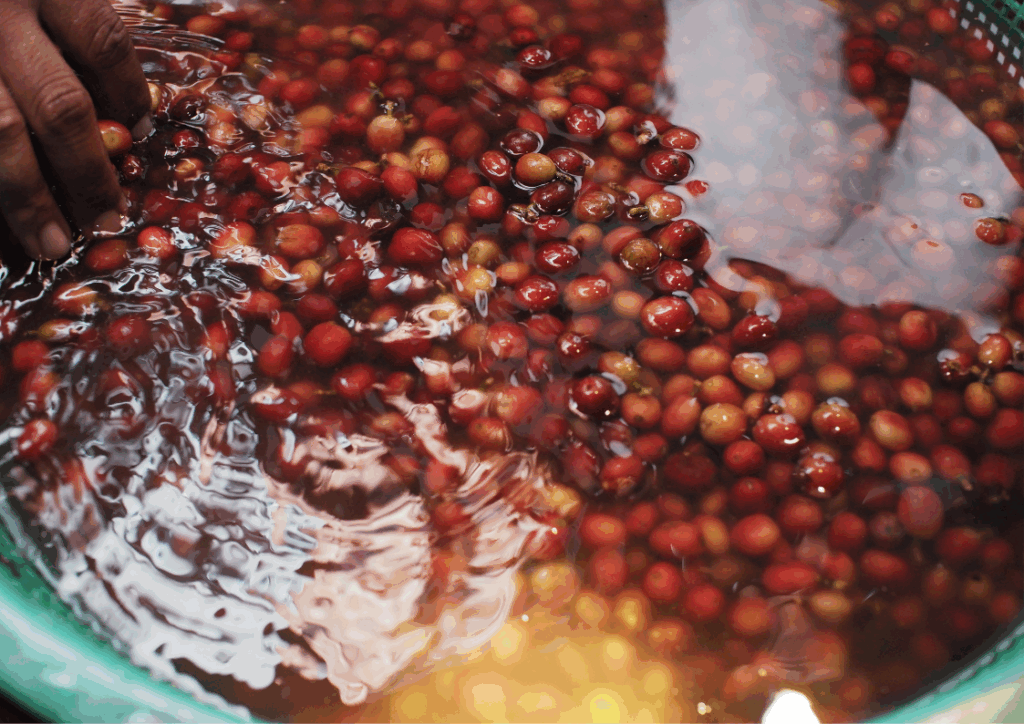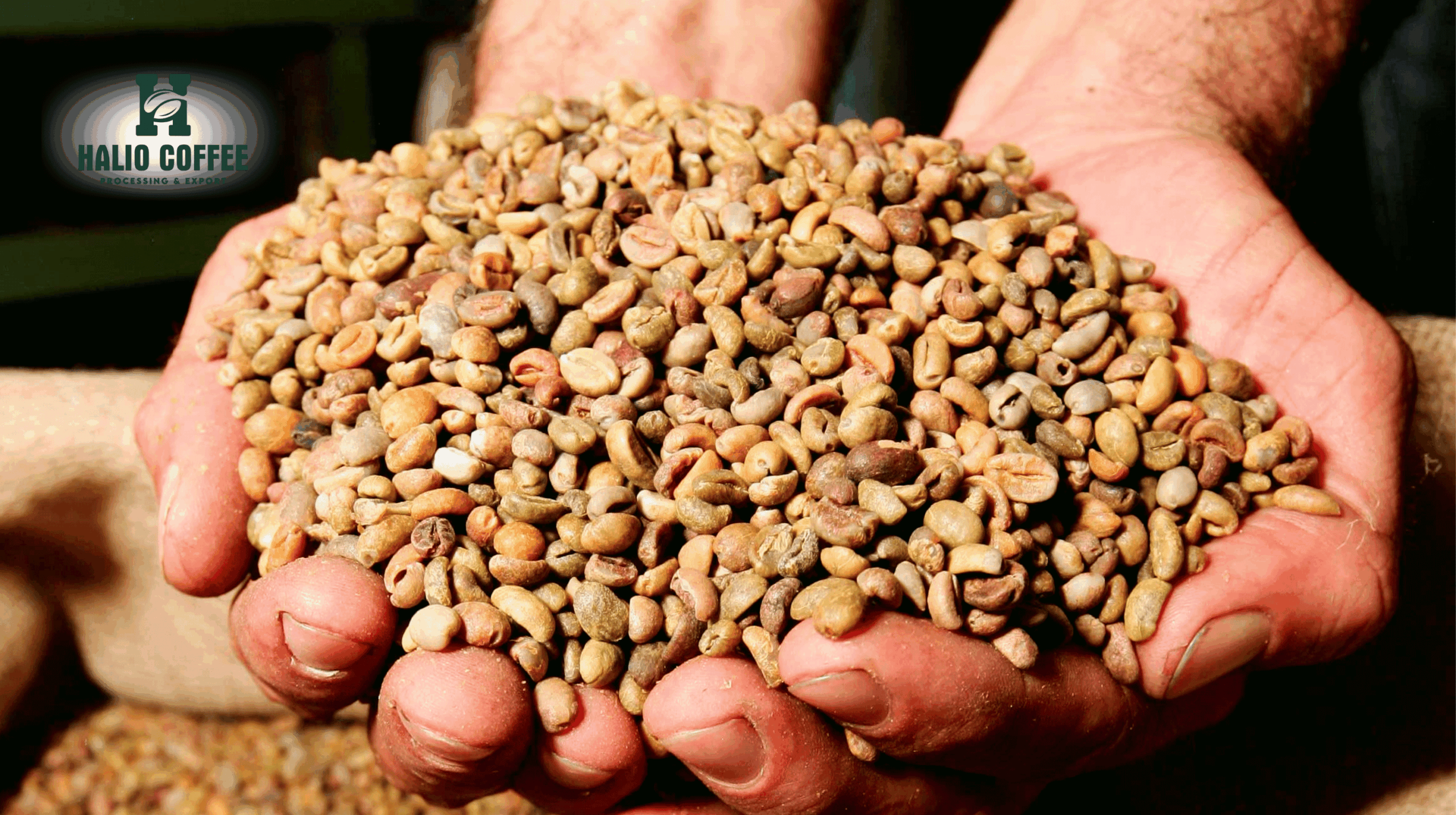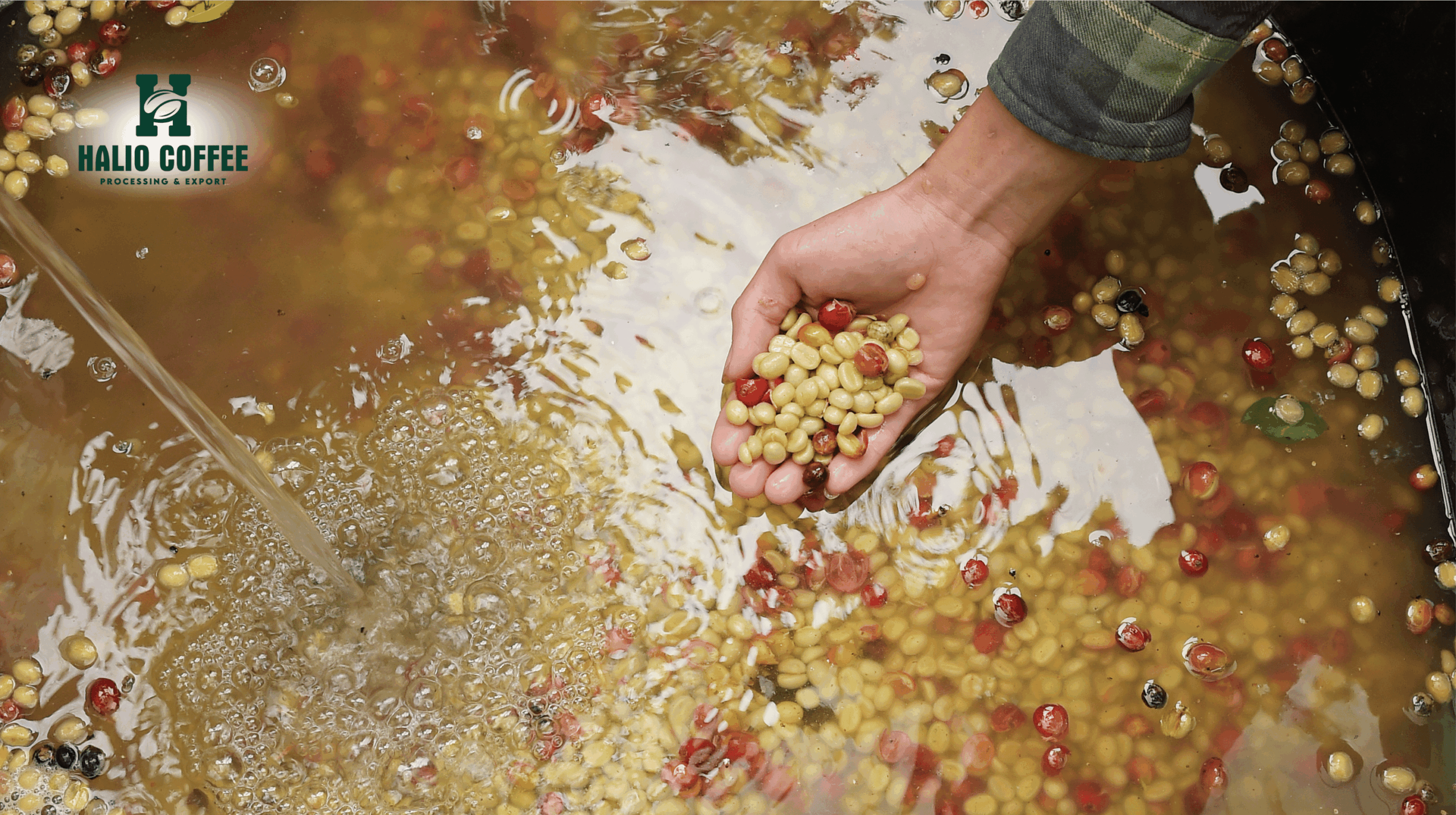Coffee Processing Methods: Unlocking the Flavor Potential of Green Coffee Beans in the Global Market
For coffee roasters, coffee manufacturers, and green coffee bean distributors globally, a profound understanding of Coffee Processing Methods is not merely beneficial—it is absolutely crucial. The way a coffee cherry is treated immediately after harvest fundamentally dictates the Natural Coffee Flavor Profile, body, acidity, and overall quality of the final green coffee beans. It is this critical step where the raw cherry’s sugars and acids are either carefully washed away, meticulously fermented into complex compounds, or intentionally absorbed into the bean itself.
1. The Role of Coffee Processing: From Cherry to Bean Transformation
After coffee producers meticulously select and hand-pick perfectly ripe coffee cherries, a time-sensitive and critical transformation begins. The layers of fruit surrounding the raw coffee beans must be removed efficiently and effectively to prevent spoilage and to cultivate desirable flavor characteristics. The chosen processing method is the primary determinant of how this fruit is separated and, crucially, how its inherent chemical compounds interact with the developing coffee bean.
1.1 Anatomy of a Coffee Cherry: A Blueprint for Processing
To fully grasp the complexities of Coffee Processing Methods, it’s essential to understand the intricate layered structure of a coffee cherry:
- Outer Skin (Exocarp): The cherry’s vibrant red or yellow outer protective layer.
- Pulp (Mesocarp): The fleshy, sweet, and typically fibrous fruit layer directly beneath the skin.
- Mucilage (Parenchyma): A sticky, gelatinous layer rich in pectin, sugars, and acids, adhering tightly to the parchment. This layer is central to the fermentation processes.
- Parchment (Endocarp): A thin, brittle, protective shell that encases the two coffee beans (or sometimes a single peaberry).
- Silverskin (Epidermis): A very thin, innermost membrane covering the bean itself. This layer typically flakes off during the roasting process.
- Green Coffee Bean: The seed, which is the core product, destined for roasting and brewing.
The fundamental objective of any processing method is to precisely separate the green coffee bean from these surrounding layers in a controlled manner, thereby influencing its final taste and aromatic profile.
2. Primary Coffee Processing Methods and Their Flavor Impact: A Sensory Spectrum
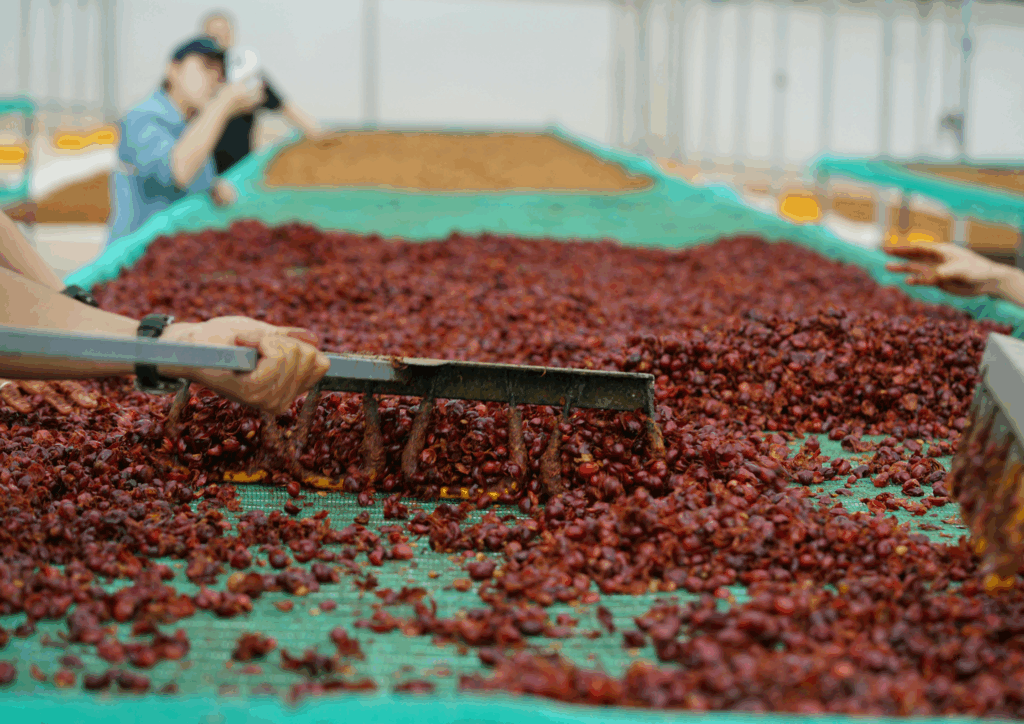
There are three main Coffee Processing Methods, each utilizing distinct principles to yield remarkably different sensory characteristics in the final cup.
2.1 Washed Process (Wet Process): The Epitome of Clarity
The washed process is widely recognized for producing clean coffee beans characterized by bright, vibrant acidity and a clear, unadulterated expression of the coffee’s origin, terroir, and coffee varietal.
- Methodology:
- Sorting: Initial sorting is crucial. Ripe cherries are separated from unripe, overripe, and defective ones, often using flotation channels where ripe cherries, being denser, sink.
- Pulping: Cherries are passed through a mechanical pulper that removes the outer skin and most of the fleshy pulp, leaving the beans encased in parchment and covered in sticky mucilage.
- Fermentation: The mucilage-covered beans are then placed in fermentation tanks (either dry or submerged in water) for a controlled period, typically 12-72 hours. During this phase, naturally occurring enzymes and microorganisms break down the mucilage. The duration is carefully monitored to prevent over-fermentation, which can lead to undesirable sour or vinegary notes.
- Washing: After adequate fermentation, the beans are thoroughly washed with clean water to remove any remaining mucilage, ensuring a pristine surface.
- Drying: The parchment-covered beans are then spread out on patios, raised beds (African drying beds), or in mechanical dryers. They are regularly turned until they reach the optimal moisture content (typically 10-12%), crucial for stable storage and even roasting.
- Flavor Impact:
- Acidity: Characteristically higher, brighter, and more prominent. Often described as crisp, citrusy (lemon, orange), malic (green apple), or tartaric (grape-like).
- Body: Generally lighter to medium-bodied, often presenting a clean, crisp, or tea-like mouthfeel.
- Clarity: Offers an exceptionally clean cup, allowing the inherent flavors of the Arabica Coffee or Robusta to shine through without interference from the fruit. This transparency makes washed coffees ideal for evaluating specific varietal characteristics.
- Flavor Notes: Typically expresses delicate floral notes (jasmine, honeysuckle), bright citrus, subtle fruits, and nuanced nutty or cocoa undertones.
- Water Usage: While historically very water-intensive, modern washed processing operations increasingly incorporate water recycling and purification systems to minimize environmental impact.
- Prevalence: The preferred method for high-quality Arabica Coffee globally, including top-tier coffees from Colombia, Central America, East Africa, and is rapidly gaining prominence in Vietnam’s specialty Arabica regions (e.g., Halio Coffee’s “Arabica S18 Fully Washed | Lam Dong Origin”).
See more:
- Raised Bed Drying Coffee
- Halio Coffee – Your Trusted Fresh Coffee Distributor of Robusta & Arabica Beans
2.3 Natural Process (Dry Process): The Essence of Fruitiness
The natural process is the oldest coffee processing method and directly results in highly fruity, sweet, and often full-bodied coffees due to prolonged contact between the bean and the drying fruit. This method profoundly influences the Natural Coffee Flavor Profile.
- Methodology:
- Initial Sorting: Ripe cherries are meticulously sorted, typically by hand or flotation, to remove unripe, overripe, or damaged cherries that could introduce defects.
- Drying: Whole, intact coffee cherries are spread out in thin layers on concrete patios or, more commonly for specialty lots, on raised beds (African drying beds) under direct sunlight. They are rigorously and regularly turned (often hourly or several times a day) to ensure even drying, prevent mold growth, and avoid over-fermentation. This labor-intensive phase can take anywhere from 2 to 4 weeks, depending on climatic conditions.
- Dry Milling: Once the cherries are completely dried (resembling raisins), they are sent to a dry mill where all outer layers (skin, pulp, mucilage, and parchment) are simultaneously removed in one mechanized step, revealing the green coffee beans.
- Flavor Impact:
- Acidity: Typically mellowed, often described as wine-like, lactic, or complex, seamlessly integrated with the dominant fruit notes.
- Body: Fuller, heavier, often syrupy, jam-like, or creamy mouthfeel.
- Clarity: Less clean than washed coffees, often possessing a pleasant and desirable “ferment,” “winey,” or “boozy” quality. However, if not controlled meticulously, it can sometimes result in undesirable “funky,” “earthy,” or overly savory notes. Achieving a clean Natural Coffee Flavor Profile requires exceptional skill.
- Flavor Notes: Characteristically dominated by intense fruit notes (blueberry, strawberry, tropical fruits like mango, pineapple, jackfruit), dried fruit (raisin, fig), and a significantly enhanced inherent sweetness (honey, caramel, molasses). This is the quintessential Natural Coffee Flavor Profile that appeals to many specialty coffee enthusiasts.
- Water Usage: Very low water usage, making it an environmentally friendly option, particularly in water-scarce Coffee Growing Regions.
- Prevalence: Traditional in Ethiopia (often producing benchmark naturals), widely used in Brazil (for large volumes, frequently destined for espresso blends), and increasingly popular and refined in Vietnam for both Arabica Coffee and Robusta green coffee beans within the specialty coffee segment (e.g., Halio Coffee’s “Arabica Natural Processed Coffee Beans” and “Robusta Natural Coffee”).
2.4 Honey Process (Pulped Natural / Semi-Washed): The Sweet Compromise
The honey process is an innovative hybrid method, skillfully combining elements of both washed and natural processes. The goal is to achieve a beautiful balance of sweetness, body, and clarity, by leaving a controlled amount of mucilage on the bean during drying. The name refers to the sticky, honey-like feel of the mucilage, not added honey.
- Methodology:
- Initial Sorting: Similar to the washed process, ripe cherries are carefully sorted to ensure optimal quality.
- Pulping: Cherries are passed through a pulper, but unlike the washed process, a specific and controlled amount of mucilage is intentionally left adhering to the parchment layer. The amount of mucilage left (often categorized as Yellow, Red, or Black Honey, depending on drying time and mucilage retention) directly influences the final flavor profile.
- Drying: The mucilage-covered beans are immediately spread out on patios or raised beds. They demand incredibly frequent turning (often every hour) and constant, vigilant monitoring to prevent over-fermentation, mold growth, or uneven drying due to the sticky mucilage. This labor-intensive drying phase can range from 1 to 3 weeks.
- Dry Milling: Once dried to the optimal moisture content, the remaining mucilage and parchment are removed in a dry mill.
- Flavor Impact:
- Acidity: Typically medium, often balanced, rounded, and integrated with the sweetness.
- Body: Medium to full, often described as creamy, syrupy, or velvety.
- Clarity: Generally offers good clarity, but with a noticeable enhancement in sweetness and body compared to washed coffees.
- Flavor Notes: Sweetness is notably pronounced (caramel, honey-like, brown sugar), accompanied by nuanced fruit notes (often stone fruits like peach or apricot, or subtle berries), and usually a clean finish with pleasant, lingering sugary notes.
- Water Usage: Moderate water usage, significantly less than washed processing but more than natural processing due to the initial pulping and some mucilage removal.
- Prevalence: Popular in Central America (especially Costa Rica, El Salvador, Nicaragua) and rapidly gaining significant traction in Vietnam for both specialty Arabica and Fine Robusta (e.g., Halio Coffee’s “Vietnam Robusta Honey Processed Coffee (SCR18, SCR16) | Grade 1”).
3. Other & Experimental Coffee Processing Methods: Pushing Sensory Boundaries
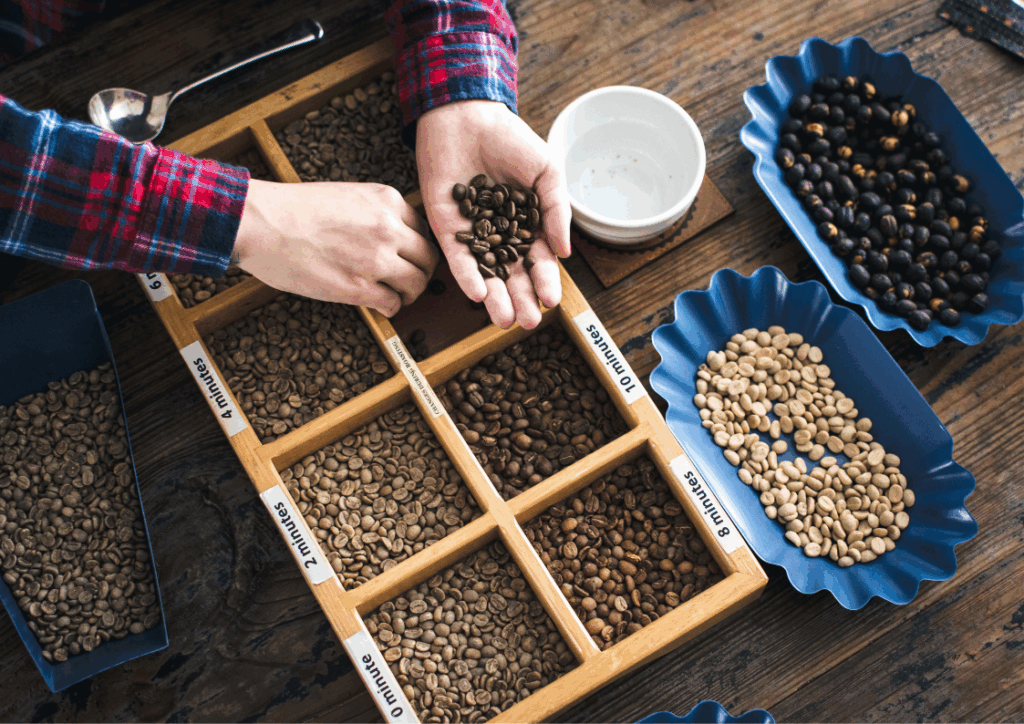
The specialty coffee industry is a hotbed of innovation, with coffee producers and researchers constantly experimenting with novel Coffee Processing Methods to discover unique and exotic flavor profiles.
- Wet-Hulled (Giling Basah): A distinctive Indonesian method, primarily found on Sumatra and Sulawesi. In this process, coffee is initially semi-washed and dried only briefly. Crucially, the parchment is then removed (hulled) at a very high moisture content (around 30-35%), after which the beans are dried again.
- Flavor Impact: Leads to signature earthy, woody, spicy, and sometimes herbal notes, coupled with an exceptionally heavy body and typically low acidity. These characteristics are emblematic of Sumatran coffees.
- Anaerobic Fermentation: A cutting-edge method where coffee cherries (whole or depulped) are fermented in sealed, oxygen-deprived tanks for extended periods (ranging from hours to several days). This controlled environment encourages specific microbial activity and enzymatic reactions that would not occur in aerobic conditions.
- Flavor Impact: Can create intensely unique, often wine-like, boozy, or unusually fruity flavors (e.g., strong tropical fruit, red wine, whiskey barrel). This method is highly experimental and can result in significant flavor variability.
- Carbonic Maceration: Inspired by winemaking techniques (e.g., Beaujolais Nouveau), whole coffee cherries are fermented in sealed, carbon dioxide-rich environments. The CO2-rich atmosphere forces intercellular fermentation within the fruit.
- Flavor Impact: Often results in exceptionally bright, vibrant fruit notes, enhanced sweetness, and sometimes a sparkling, Champagne-like effervescence.
- Co-Fermentation: This involves fermenting coffee cherries with other fruits (e.g., passion fruit, orange, pineapple) or added yeast strains to infuse distinct flavors.
- Flavor Impact: Highly varied and often intensely flavored, showcasing the characteristics of the added fruit or yeast.
4. Strategic Significance of Processing Methods for Coffee Businesses

For coffee roasters, coffee manufacturers, and green coffee bean distributors, a sophisticated understanding of Coffee Processing Methods is not merely academic—it is absolutely critical for making informed purchasing decisions, crafting desirable end products, and successfully navigating the competitive global market.
4.1 For Coffee Roasters: The Art of Flavor Development
- Roast Profile Adaptation: Different processing methods necessitate distinct roasting approaches. For instance, natural processed beans, with their higher inherent sugar content, tend to caramelize faster and require careful control to prevent scorching. Washed coffees, with less residual sugar, can typically handle more heat and develop more evenly. Mastering these nuances is key to unlocking optimal flavor.
- Blend Composition: The judicious selection of beans based on their processing method is fundamental to creating balanced, complex, and appealing espresso blends or filter blends. For example, a roaster might combine a clean washed Arabica Coffee for its brightness, a fruity natural Arabica for its complexity, and a full-bodied honey-processed Robusta for its enhanced crema and sweetness.
- Consumer Education and Marketing: Roasters can leverage their knowledge of processing methods to educate their customers about how these techniques directly influence the flavor experience. This transparency enhances consumer appreciation, builds trust, and can justify premium pricing for specialty coffee beans.
4.2 For Coffee Manufacturers: Consistency and Product Innovation
- Product Development: Selecting the right processed green coffee beans is vital for achieving specific product characteristics in manufactured coffee products. For example, a manufacturer might choose a heavily fruited natural for a unique cold brew concentrate, or a clean washed Arabica for a specific instant coffee blend profile.
- Flavor Consistency: A deep understanding of the impact of various Coffee Processing Methods helps manufacturers ensure consistent flavor profiles across large production batches of raw coffee beans, which is paramount for brand loyalty and quality control.
4.3 For Green Coffee Bean Distributors (e.g., Halio Coffee Co., Ltd.)
- Curated Offerings: Distributors can strategically curate a diverse and comprehensive portfolio of green coffee beans based on their processing methods, effectively catering to the varied and evolving demands of their coffee roaster and coffee manufacturer clients, both domestically and internationally.
- Quality Control and Assessment: Expertise in the nuances of processing allows distributors to assess the quality of incoming lots more accurately, effectively identifying well-processed Specialty Coffee Beans versus those with potential defects or inconsistencies. Halio Coffee’s stated commitment to “Proper Processing” (Honey, Washed, Dry/Natural) underscores their internal expertise and capability in this critical area.
- Market Insight and Guidance: Distributors play a pivotal role in guiding buyers on the best processing methods for their specific target markets and end applications. This involves leveraging deep knowledge of current global trends (e.g., the rising demand for high-quality natural Arabica from Vietnam or refined honey Robustas).
- Traceability and Compliance: Distributors are key facilitators in providing detailed information on processing methods, contributing to full supply chain traceability for increasingly stringent regulations like the EU Deforestation Regulation (EUDR) (effective December 2024), which demands verifiable information on the origin and processes of raw coffee beans.
5. Vietnam’s Expertise in Coffee Processing: A Story of Innovation and Quality

Vietnam, driven by forward-thinking companies like Halio Coffee Co., Ltd., is not merely a high-volume producer but also a rapidly advancing innovator in Coffee Processing Methods, particularly for its burgeoning specialty coffee beans.
- Traditional Strengths and Modern Refinement: Vietnam has historically excelled in large-scale natural/dry processing for its robust Robusta crop. Halio Coffee’s “Robusta Natural Coffee (SCR18, SCR16) | Grade 1” is a testament to this deep-rooted expertise, now refined for consistency and quality.
- Arabica Processing Evolution: For its High Altitude Arabica Coffee Beans from Lam Dong, Son La, and Quang Tri, Vietnam is rapidly adopting and refining Washed and Honey processes to highlight the delicate and complex flavors inherent in these higher-grown beans. Halio Coffee proudly offers “Arabica S18 Fully Washed | Lam Dong Origin” and “Arabica Natural Processed Coffee Beans” from these regions, showcasing their commitment to diverse Arabica processing.
- Honey Robusta Innovation: Vietnam is also a pioneer in Fine Robusta honey processing, developing a sweeter, more nuanced Robusta that actively challenges traditional perceptions of the species. Halio Coffee’s “Vietnam Robusta Honey Processed Coffee (SCR18, SCR16) | Grade 1” is a prime example of this innovation, appealing to specialty coffee enthusiasts looking for bolder, yet refined profiles with enhanced sweetness and body.
- Unwavering Commitment to Quality: Halio Coffee’s emphasis on “Proper Processing” across all methods (Honey, Washed, Dry/Natural) and their strict “100% Riped” cherry selection policy underscore their dedication to meticulous post-harvest handling. This directly impacts the final cup quality of their raw coffee beans and ensures a consistent, premium product for their clients. Their “High Quality” mantra is rooted in these precise processing controls.
Coffee Processing Methods are the alchemical key that unlocks the diverse and captivating flavors hidden within green coffee beans. From the pristine clarity and vibrant acidity of a washed Arabica Coffee to the intense fruitiness of a natural, and the balanced sweetness and body of a honey-processed bean, each method offers a unique sensory journey. For coffee roasters, coffee manufacturers, and green coffee bean distributors, a deep understanding of these intricate methods is indispensable for strategic sourcing, product innovation, and effective communication with consumers in a discerning global market. Vietnam, with its rich tradition in natural processing and its rapid advancements in washed and honey methods for both Arabica Coffee and Robusta green coffee beans, is becoming an increasingly sophisticated and compelling origin for sourcing Specialty Coffee Beans that meet the highest global standards. Companies like Halio Coffee Co., Ltd. stand at the forefront of this evolution, offering a “Wide Assortment” of expertly processed Vietnamese coffee to the world, ensuring “Trusted Beans. Global Roasts.”
- Coffee Prices Climb for Second Day Amid Brazil Frost Fears
- Beyond the Bitter: A Roaster’s Guide to the Emergent World of Fruity Robusta Coffee Flavor
- More Than a Label: The Definitive B2B Guide to Sourcing Fair Trade Roasted Arabica Coffee Beans
- The Definitive Guide to How to Buy Green Coffee Beans Direct from the Source
- Coffee Prices Today, Nov 12: Arabica and Robusta Continue Mixed Performance; What Are the Causes?
